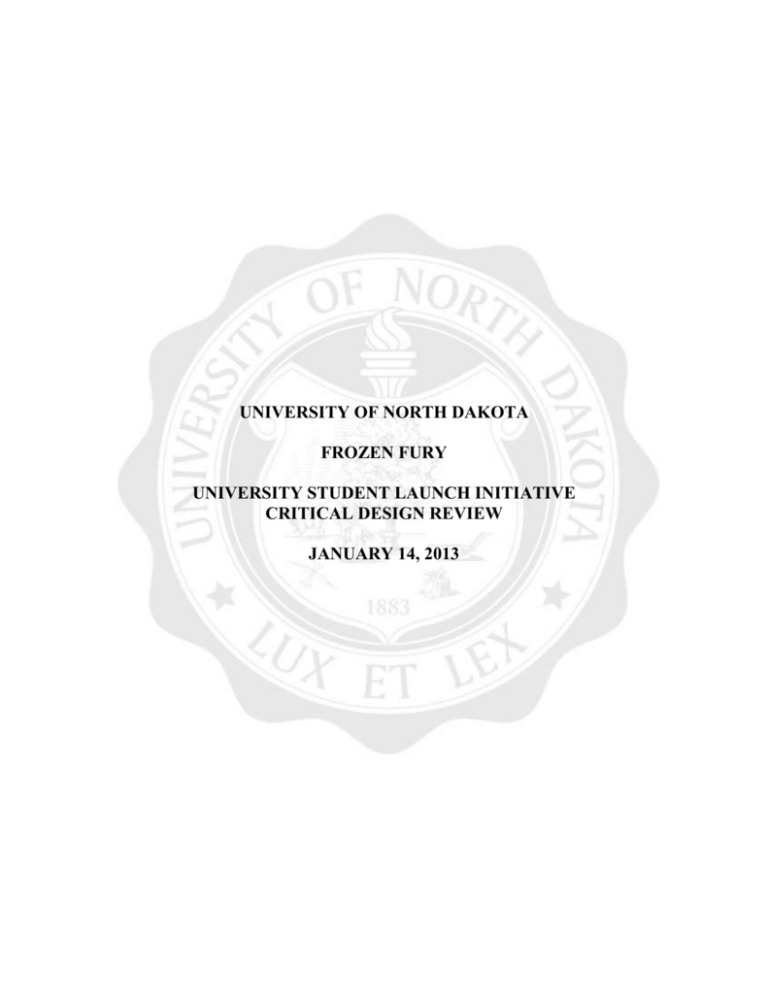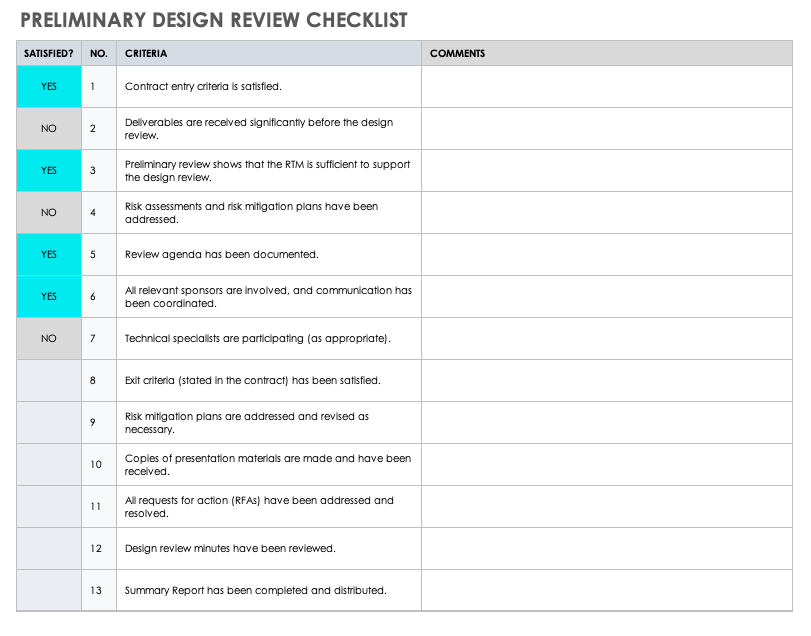Critical Design Review CDR glossary
Table Of Content

The feedback and iteration loop in a design critique helps you avoid getting attached to your design and focus on what is best for the business, users, and stakeholders. Within a critique, the discussion is moved away from the way you feel about it and focused more on the effectiveness of the design and actionable items. Be sure to prepare all participants with preliminary details, including business goals, design review goals, timelines, expected deliverables, and any other information that may not be clear. Having visibility into the design will ensure that team members have a full understanding of the design review purpose and will reduce unnecessary questions during the review session. The goal of the meeting is to understand the design, identify challenges, improvement opportunities, and ask questions.
The National Aeronautics and Space Administration
Include what is in and out of scope for each design review session. For example, a design review may focus on a specific feature’s capabilities, but not the look and feel. Each design review will have different invitees, depending on the goal.
What is destructive feedback?
Product design reviews will occur several times throughout the product’s development lifecycle, from concept through completion, scheduled, and any other ad hoc meetings. The types of reviews and frequency will depend on the type of system or product in development. In this article, we will discuss the design review process and how to use it to positively impact product and business goals. The role of the facilitator here is crucial, as defining the scope of exploration can help designers get the most useful feedback from critique sessions. It leads to good design and positive culture in which designers can flourish.
Who should be involved in a design critique?
The list of reviews done by an effort and the content, nature, process, and objectives any review uses vary enormously by the organization involved and the particular situation of the effort. During the design review process, stakeholders assess the design in question. In a design review meeting, designers present the design, and participants provide feedback in the form of questions, challenges, and suggested improvements.

It’s often best to split up the stakeholder feedback sessions and critiques into two separate rituals. They tend to be more informal since the team works together and has a consistent communication cadence. This eliminates the need to create a formal meeting to present designs and explain the context to new people, ultimately saving time and quickly progressing design. This guidance is focused on the responsibilities of the software engineering community throughout the project life cycle reviews. Outside of work, he spends time with his family and practicing karate.
Design Review Agenda Template
Ahead of the 20th PDA Universe of Pre-Filled Syringes and Injection Devices Conference, we cover where medical device innovations are expected to go.... 2023's PDA & PODD conferences provided valuable insight into the drug delivery industry. Following the meeting, minutes should be complied and distributed to those involved. The SDR examines the proposed system architecture and design and the flow down to all functional elements of the system. When teams have clarity into the work getting done, there’s no telling how much more they can accomplish in the same amount of time.

It’s about getting the most out of design feedback – and here’s where a design critique procedure is the most effective way of doing this. Conducting a productive design critique session can be challenging. Designers often forget that not everyone understands the finer points of the design process, the language of design criticism, and the rules of a design critique. Design critiques are a key part of the product design process that encourage collaboration and improve ideas. This guide will help designers conduct productive, efficient critiques for actionable feedback.
Ways to Make Authentication Systems More User-friendly
A good practice is to host formal reviews that include participants not intimately involved in the design — doing so will ensure that feedback is useful and free of bias. However, there are instances where it’s necessary to have an ad hoc design review meeting with only those involved with the design. These informal meetings may occur following a formal design review to discuss feedback. The product baseline describes the detailed design for production, fielding/deployment, and operations and support.
The SRR examines the functional requirements and performance requirements defined for the system and the preliminary program or project plan and ensures that the requirements and the selected concept will satisfy the mission. Design reviews occur at various points in the product development lifecycle. These reviews may be formal or technical, and may take the form of an open discussion or a more structured workshop. It’s an end-to-end solution that covers the whole design process, from working on basic user flows to building interactive prototypes that can be easily shared with stakeholders and product managers. Design critiques are an indispensable exercise that, if used properly, will help you and your team to improve the design quality of your products and services.
Northrop Grumman Completes Critical Design Review for the Space Development Agency's Tranche 1 Tracking Layer ... - Northrop Grumman Newsroom
Northrop Grumman Completes Critical Design Review for the Space Development Agency's Tranche 1 Tracking Layer ....
Posted: Wed, 15 Nov 2023 08:00:00 GMT [source]
Design critique simply refers to the process of analyzing a design or prototype to determine if it meets the criteria and requirements of the project. Inviting stakeholders to your critique may feel like a way to kill two birds with one stone. You can give them visibility of your projects, provide critique within the design team and get feedback from the people who matter. To begin with, you are inviting an uneven power dynamic within the group that is almost impossible to get around. Unless stakeholders are coming to a critique willing to follow the critique charter, the value will likely be very low.
With good critiques, designers can easily collect relevant and actionable feedback on product prototypes. By incorporating designer and stakeholder feedback into the UX design process, you can reinforce your business goals and design products that better meet user needs. A design critique is performed in order to evaluate a design and provide feedback on whether or not it meets business objectives and user needs. Design critiques encourage collaboration within teams and provide a boost to positive team culture toward improving design ideas. The feedback received during design critiques helps designers think outside of the box, often leading to better, more innovative choices throughout the design process. A Critical Design Review (CDR) is a multi-disciplined independent technical assessment to ensure that a system can proceed into fabrication, demonstration, and test and meet stated performance requirements within cost, schedule, and risk.
Design critiques help break down silos, where individual designers or teams are disconnected in their approach from other colleagues and the wider business objectives. “Particularly this will show up in the areas of model-based systems engineering, and modular open systems architectures. Additionally, a successful ground run of one of the prototype aircraft for FARA will reduce risks on future Improved Turbine Engine integration efforts on the other platforms,” he said. Some product and design teams have a set of principles they like to stick to help guide the discussion and prevent negative energy throughout the session. After the session and depending on the objectives of the meeting, the presenter should have a list of specific actions to be taken next. They should then create a summary of the feedback and actions and share it with the group.
The design review plan or checklist you use (critical design, non-technical, engineering design, etc.) depends on the stage and type of product. Use a template for the plan to ensure you and your team have visibility into all the deliverables. The first thing to do as you prepare for a design review of any product is to pick the meeting style that is most appropriate for your team. Will your team find an open-round table discussion or structured workshop most beneficial?
Comments
Post a Comment